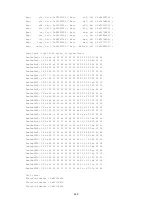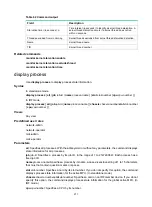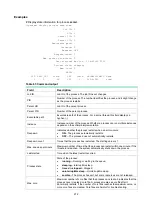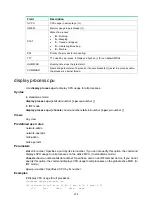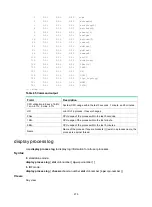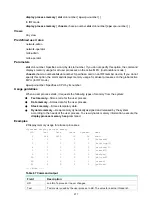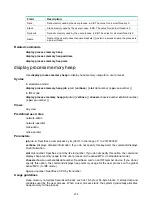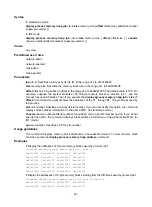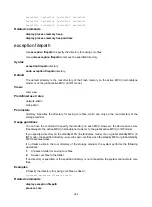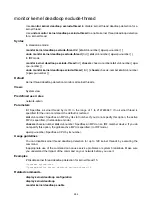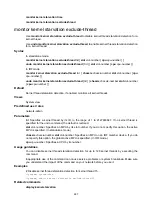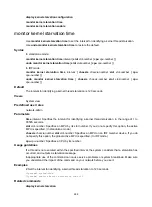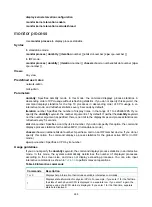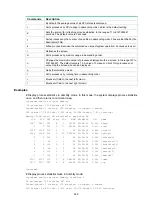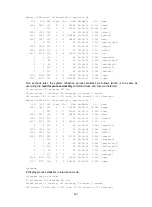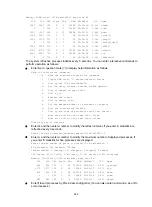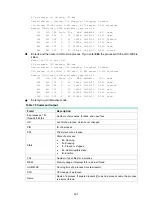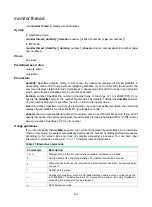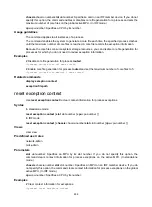
283
monitor kernel deadloop enable
Use
monitor kernel deadloop enable
to enable kernel thread deadloop detection.
Use
undo monitor kernel deadloop enable
to disable kernel thread deadloop detection.
Syntax
In standalone mode:
monitor kernel deadloop enable
[
slot
slot-number
[
cpu
cpu-number
] ]
undo monitor kernel deadloop enable
[
slot
slot-number
[
cpu
cpu-number
] ]
In IRF mode:
monitor kernel deadloop enable
[
chassis
chassis-number
slot
slot-number
[
cpu
cpu-number
] ]
undo monitor kernel deadloop enable
[
chassis
chassis-number
slot
slot-number
[
cpu
cpu-number
] ]
Default
Kernel thread deadloop detection is disabled.
Views
System view
Predefined user roles
network-admin
Parameters
slot
slot-number
: Specifies an MPU by its slot number. If you do not specify this option, the active
MPU is specified. (In standalone mode.)
chassis
chassis-number
slot
slot-number
: Specifies an MPU on an IRF member device. If you do
not specify this option, the global active MPU is specified. (In IRF mode.)
cpu
cpu-number
: Specifies a CPU by its number.
Usage guidelines
Kernel threads share resources in kernel space. If a kernel thread monopolizes the CPU for a long
time, other threads cannot run, resulting in a deadloop.
The command enables the device to detect deadloops. If a thread occupies the CPU regularly, the
device considers that a deadloop has occurred. It outputs a deadloop message and reboots to
remove the deadloop.
Inappropriate use of the command can cause service problems or system breakdown. Make sure
you understand the impact of the command on your network before you use it.
Examples
# Enable kernel thread deadloop detection.
<Sysname> system-view
[Sysname] monitor kernel deadloop enable
Related commands
display kernel deadloop
display kernel deadloop configuration
monitor kernel deadloop exclude-thread
monitor kernel deadloop time

